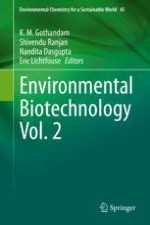2020 | OriginalPaper | Chapter
3. Nanobioremediation Technologies for Potential Application in Environmental Cleanup
Authors : Surbhi Sinha, Tithi Mehrotra, Ashutosh Srivastava, Arti Srivastava, Rachana Singh
Published in: Environmental Biotechnology Vol. 2
Publisher: Springer International Publishing
Activate our intelligent search to find suitable subject content or patents.
Select sections of text to find matching patents with Artificial Intelligence. powered by
Select sections of text to find additional relevant content using AI-assisted search. powered by
